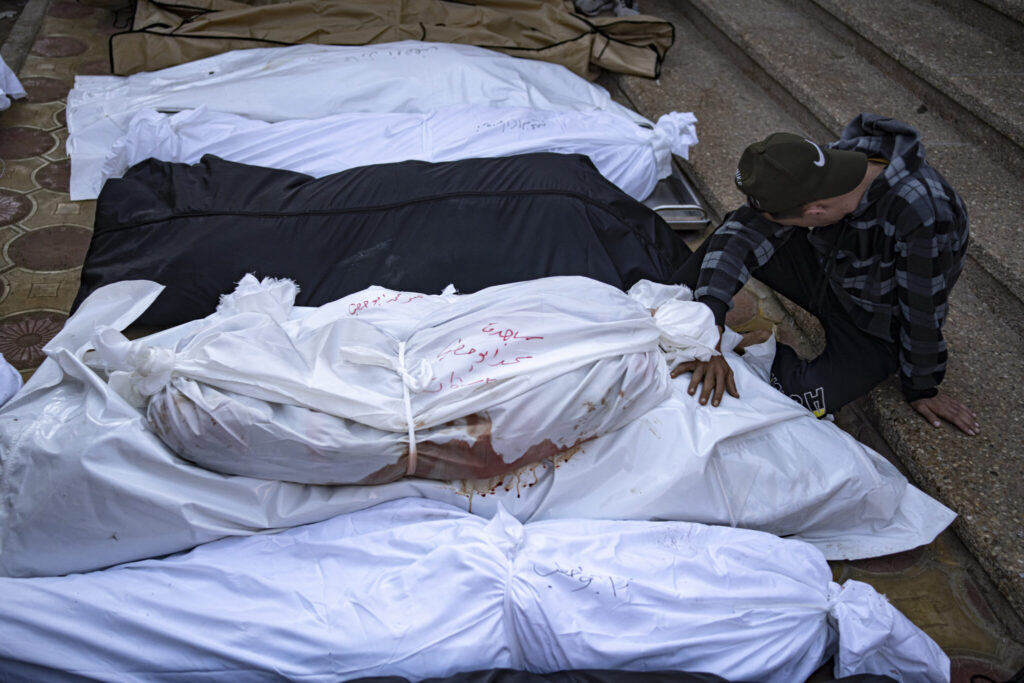An Israeli military push into the crowded south of the Gaza Strip proves more complicated than its ground offensive in the north, with higher casualties likely for civilians and soldiers, a senior Israeli security source and two former top officials said.
Quick Read
- Expected Israeli Military Push in Southern Gaza: The Israeli military is anticipated to advance its operation into the densely populated south of the Gaza Strip, potentially leading to higher civilian and soldier casualties.
- Shelling Near Khan Younis: Recent shelling around the town of Khan Younis in southern Gaza has raised fears among displaced Palestinians of an imminent military push.
- Displacement of Gazans: Hundreds of thousands of Gazans have already fled to the south from the north, following Israeli directives. New leaflets urging them to move westward have increased their fear and uncertainty.
- Concerns About Civilian Safety: The anticipated military operation in the south is expected to be more complex and risky for civilians, given the dense population in the area.
- Israeli Government’s Stance: While the Israeli government argues that the offensive will improve the chances of recovering hostages through a possible prisoner exchange, many Israelis criticize the government for being unprepared for the Hamas assault.
- U.S. Official’s Comments: A senior U.S. official suggests that the Israeli campaign in the south will likely rely more on ground forces than airstrikes due to the dense population.
- Hamas’ Claims and Threats: Hamas has claimed that some hostages have been killed in Israeli attacks on Gaza, further escalating the situation and the demand for a quick resolution.
- International Concern Over Civilian Toll: The growing civilian casualties from the Israeli offensive have led to international outcry, including from the United States, Israel’s closest ally.
- Details of the Conflict: Over 12,000 people have been killed in Israel’s campaign, launched in retaliation for a Hamas raid on October 7, where about 1,200 people were killed and 240 hostages taken.
- Israel’s Warning to Khan Younis: Israel has issued warnings to Palestinians in Khan Younis to evacuate, hinting at intensified military actions in the area.
- U.S. Calls for Humanitarian Corridors: The U.S. has supported Israel’s campaign but has urged for humanitarian corridors and expressed concerns over civilian deaths.
- Netanyahu’s Acknowledgement of Civilian Deaths: Israeli Prime Minister Benjamin Netanyahu has acknowledged the unintentional civilian deaths as a tragedy, stating efforts to minimize them have not been successful.
- High Displacement and Risks in the South: With around 400,000 displaced Gazans in the south, the region faces significant humanitarian challenges and the risk of escalated violence.
- Israel’s Determination and Strategy: Israeli officials express determination to continue the operation, with potential changes in military tactics due to the concentrated population in the south.
- Complications for U.N. and Civilians: The U.N. facilities in Gaza are overwhelmed, and civilians have limited options for safe relocation, with the Rafah crossing to Egypt mostly closed.
Reuters has the story:
Israeli offensive in Crowded South Gaza puts Civilians in firing line
Newslooks- LONDON/GAZA, (Reuters)
An Israeli military push into the crowded south of the Gaza Strip proves more complicated than its ground offensive in the north, with higher casualties likely for civilians and soldiers, a senior Israeli security source and two former top officials said.
An Israeli military spokesman indicated on Friday that the military operation against Hamas would advance into southern Gaza but gave no indication of timing. A wave of shelling on Thursday in southern Gaza around the town of Khan Younis has stirred fear among displaced Palestinians sheltering there that the anticipated military push was imminent.
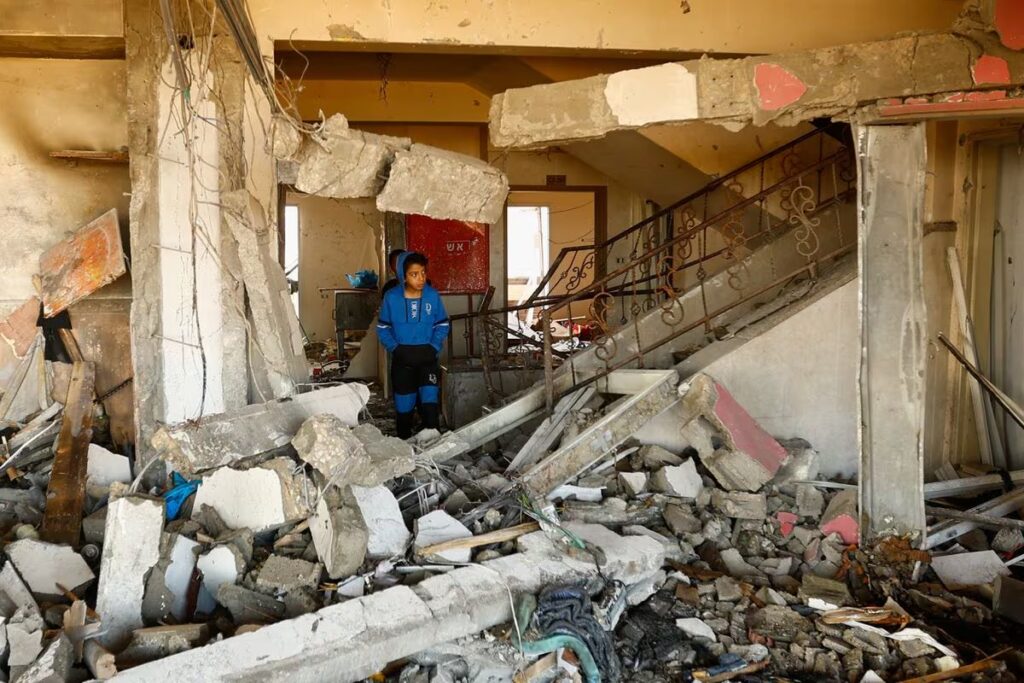
Hundreds of thousands of Gazans fled to the south of the enclave in recent weeks after Israel told them to leave the north. Now many are afraid after leaflets were dropped near Khan Younis on Thursday telling them to move again, this time westward.
“They asked us, the citizens of Gaza, to go to the south. We went to the south. Now they are asking us to leave. Where do we go?” said Atya Abu Jab, outside his tent where his family who fled Gaza City now live, one of a long row of makeshift homes.
The leaflets in areas around Khan Younis were dropped before heavy shelling, the kind of pattern that heralded the start of Israel’s ground assault three weeks ago.
On Saturday, Israel issued a fresh warning to Palestinians in Khan Younis to move out of the line of fire and closer to humanitarian aid, before airstrikes continued.
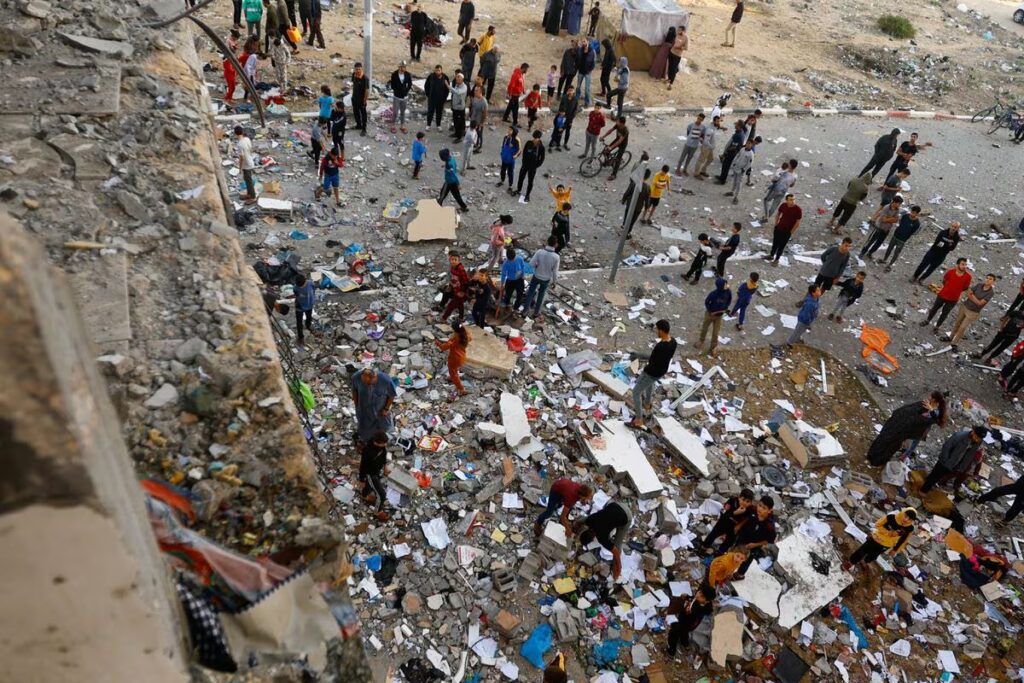
Giora Eiland, a former head of Israel’s National Security Council, said a ground campaign might take three to four weeks to subdue Hamas resistance in the south, where its leadership was now concentrated.
“One of the more challenging situations is the simple fact that most of the people of the Gaza Strip are now concentrated in the south,” he told Reuters. “There will probably be more civilian casualties … It is not going to deter us or prevent us from moving forward.”
The escalating civilian toll of the offensive has already stirred outcry across the Middle East and among Western nations, including Israel’s closest ally the United States.
Gaza health authorities say more than 12,000 people have been killed so far in Israel’s campaign, which was launched in retaliation for an Oct. 7 attack by the Palestinian militant group Hamas that runs the Gaza Strip. Hamas gunmen killed about 1,200 people and took some 240 hostages in the raid.
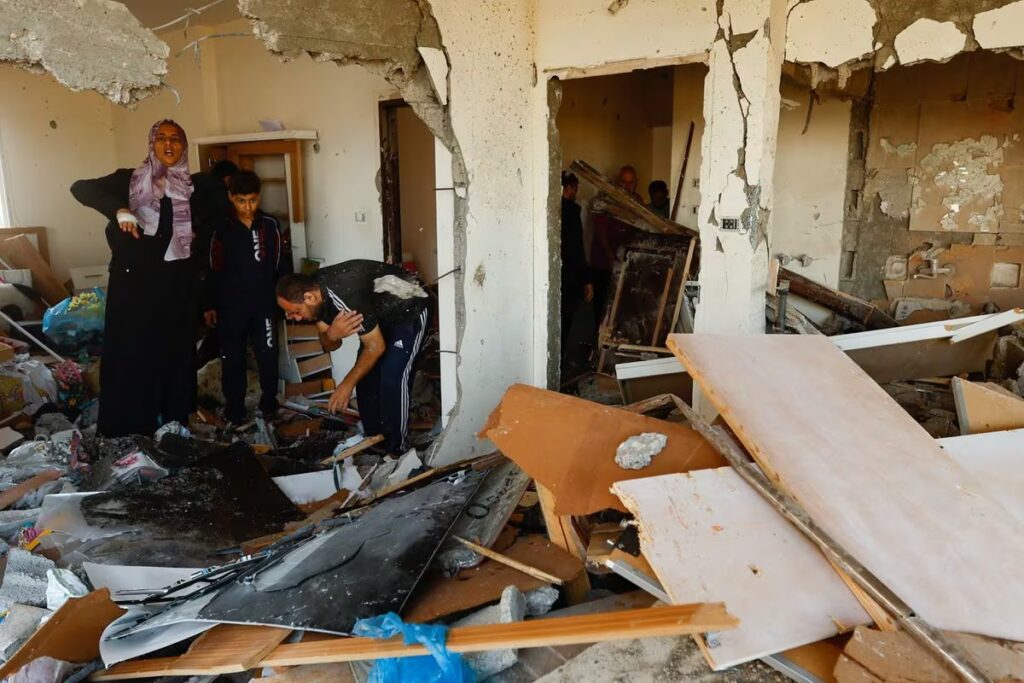
A senior U.S. official told Reuters that, given the south was densely populated, an Israeli campaign there was likely to put less emphasis on airstrikes and focus more on ground forces, comments that chimed with assessments by Israeli sources.
The U.S. official also said Israel had no choice but to launch an offensive in the south if it wanted to vanquish Hamas – the stated aim of the campaign.
Rear Admiral Daniel Hagari, Israel’s chief military spokesman, told a regular briefing on Friday that an expanded offensive would proceed whenever the armed forces deemed best.
“We are determined to advance our operation. It will happen wherever Hamas exists, including in the south of the strip,” Hagari said, without providing further details.
US CALLS FOR HUMANITARIAN CORRIDORS
Washington has backed Israel’s campaign to annihilate Hamas but, while stopping short of seeking a ceasefire, it has called for pauses to let in aid for Gaza’s 2.3 million people and said there have been too many civilian deaths already.
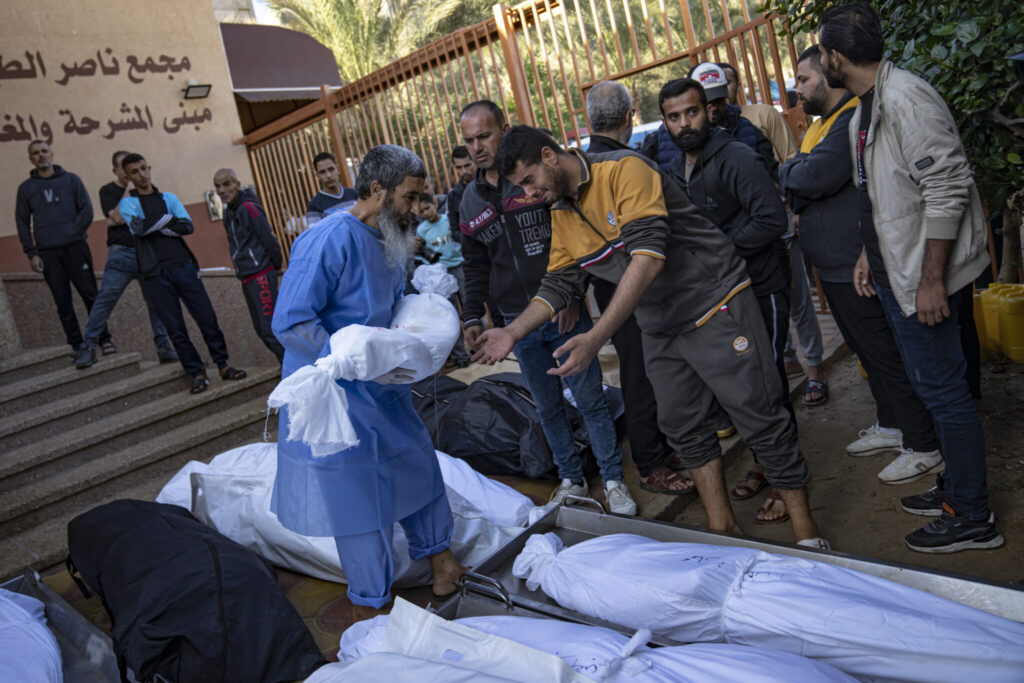
“We have been in conversation with them to impress upon them that as they continue to look at expanded military operations or ground operations in other parts of Gaza, they need to ensure that there are…humanitarian corridors for civilians,” U.S. State Department spokesperson Matthew Miller told reporters on Thursday.
Israel says it does everything it can to minimise civilian casualties in its military operations, although Prime Minister Benjamin Netanyahu said on Thursday those efforts were “not successful”, calling any civilian death a tragedy.
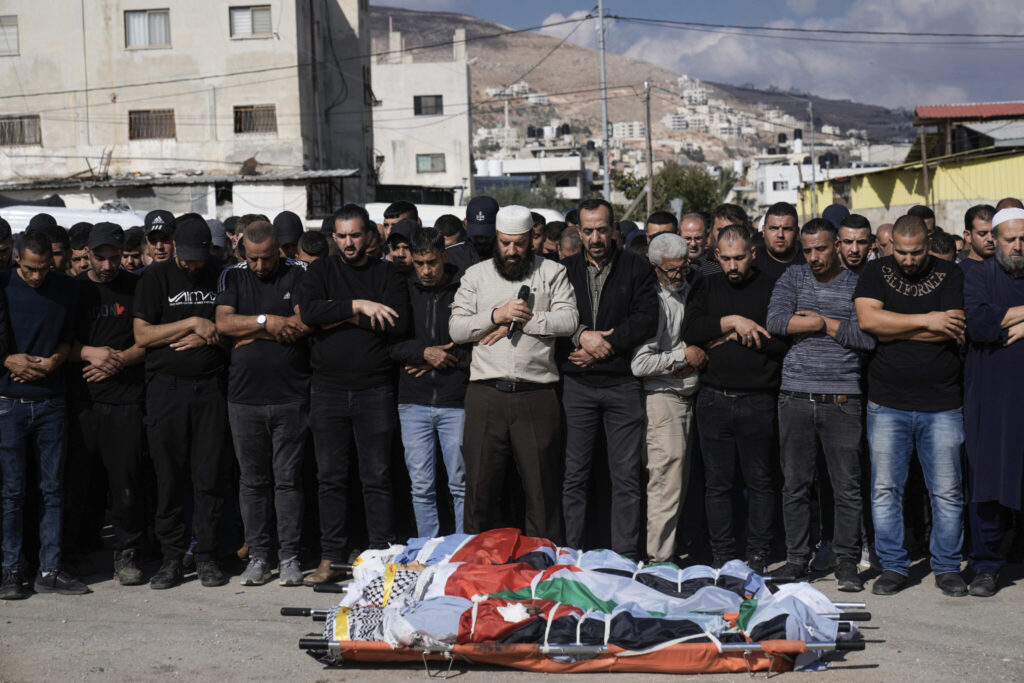
With Palestinians now effectively cornered, the second stage in Israel’s military campaign is fraught with even more risks than the first. The United Nations estimates, based on Palestinian figures, about 400,000 displaced Gazans have moved south.
The senior Israeli security source said that the fighting in the south was expected to be tougher and more intense, with higher casualties on both sides. Khan Younis is a power base of Hamas’ leader in Gaza, Yahya Sinwar, the source said.
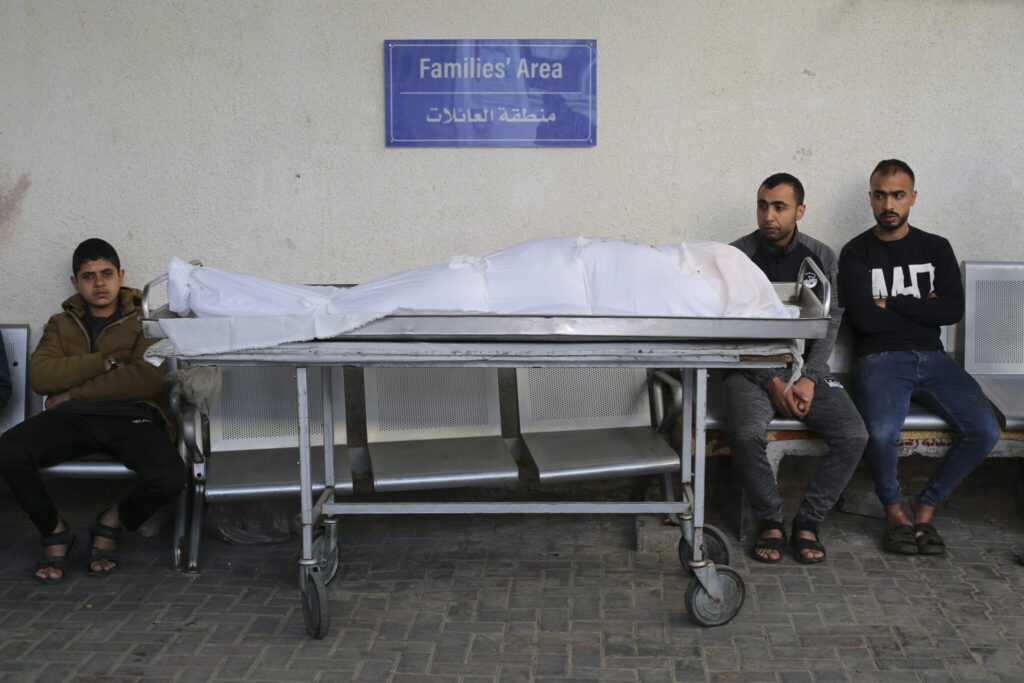
In Khan Younis, 23-year-old Ahmed said that many Hamas fighters – known as the resistance – had survived the onslaught in the north. “They (the Israelis) want to come to the south? They can. The resistance will fight back because no one welcomes occupiers,” he said.
Assessing Israel’s gains till now, Eiland said he believed the IDF had dealt with “something like 50%” of Hamas’ military capacity.
But Hamas officials outside Gaza – who, given collapsing communications inside the enclave, are now the main voice of the Islamist group – insist that it is far from being a spent force.
“The resistance still believes that it is at the beginning of operations to confront the occupiers and emphasises the continuation of the confrontation,” Osama Hamdan, a Beirut-based Hamas official, told the Iranian news agency IRNA.

COMPLICATIONS IN THE SOUTH
As of Thursday, Israel’s military figures indicate more than 50 soldiers have been killed since the ground offensive began, compared with the 66 killed in its last major incursion in 2014.
“Khan Younis will be very hard because a lot of the terrorists fled there and are operational there,” said the senior Israeli security source, who declined to be identified, adding the southern campaign was likely to begin in earnest within days and could take a month to arrive at the Egyptian border.
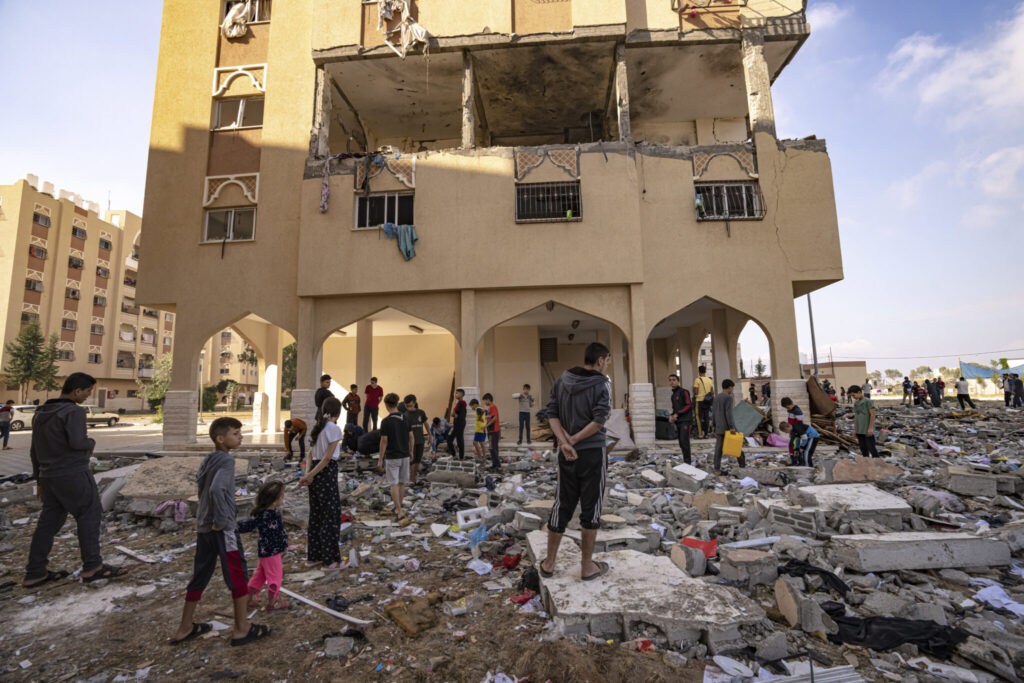
The Israeli source and former officials said the concentration of people in the south meant a campaign of airstrikes was unlikely to be as intense as in the north.
They also said the military may seek to encourage civilians to head into U.N. encampments for safety.
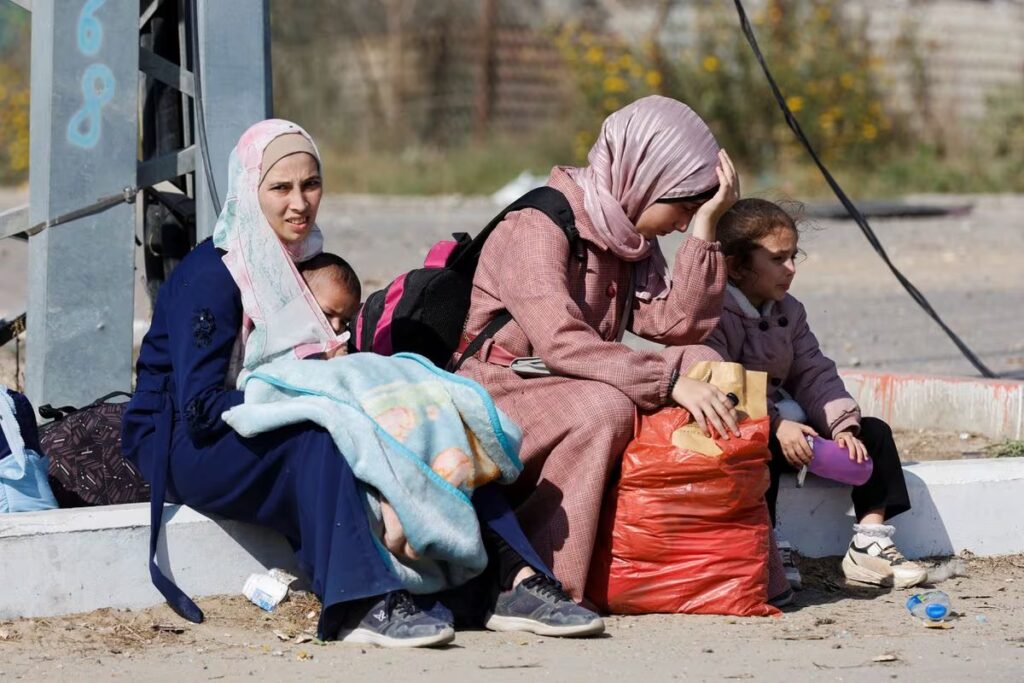
But U.N. agencies say their Gaza operations are virtually paralyzed by Israel’s blockade and their schools and other facilities are already full to bursting with the displaced.
Early in the conflict, Israel’s military urged displaced Palestinians to head to Al Mawasi, a sandy area with some orchards close to the southern coast. But it is vulnerable to flooding. Rains – some already torrential – have already begun.
Fleeing south into Egypt is not an option. Gaza’s Rafah crossing to Egypt, the only exit not leading to Israel, is firmly shut to everyone except for foreigners or dual citizens and patients in dire need Gaza’s hospitals shut down for lack of fuel.
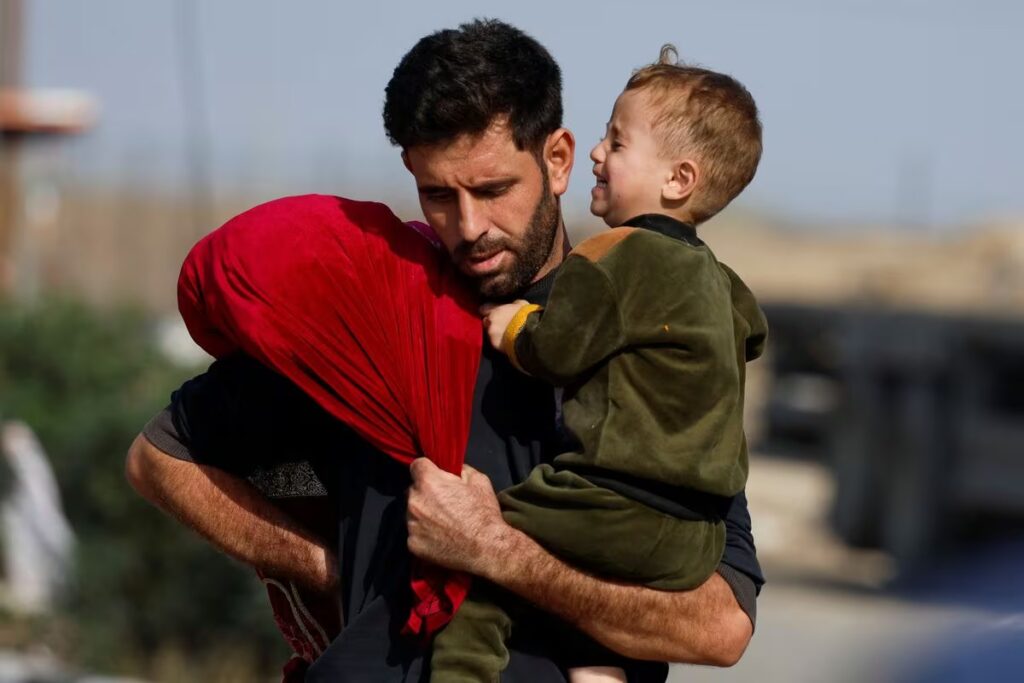
Egypt and other Arab states – and even many in Gaza – say Palestinians should not leave for fear of repeating the dispossession faced by hundreds of thousands who fled across the border never to return when Israel was created in 1948.
But, even if the southern campaign requires a slower pace and three to four weeks to reach the same objectives as in the north, according to Eiland, Israel will be undeterred.
“I’m not sure that all foreigners understand the Israeli mood: Israel will not stop the operation before the hostages are back,” said Eiland.

